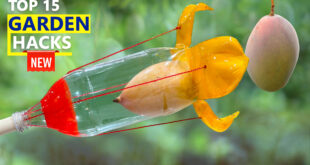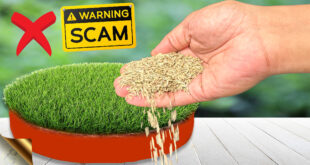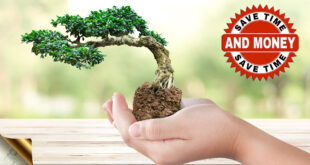In Today’s post, let us look into few important tips and tricks on how to successfully grow Beans and Peas or any plant from Legume family in containers and some special anti-gravity tricks to get the best growth and harvest.
Growing and harvesting your own garden veggies organically without using any chemical fertilizers or pesticides gives one huge sense of satisfaction and a healthy feeling. If you love to do edible organic gardening at home, and if you do not have a proper ground space for growing vegetables, do not worry, you can easily grow most vegetables in containers, whether on your terrace or your balcony.
Beans and Peas are warm weather vegetables and can be easily grown in containers if you follow these 10 important tips and tricks.
- CONTAINER SIZE: The minimum size of the container to grow beans and peas especially the climber type of plant is 15 inches diameter and 15 inches depth. This is the minimum size and one plant per container. You can use a plastic pot, a cement pot, a clay pot or even a fabric grow bag. These fabric grow bags are very beneficial in space constraint gardens because they follow the principles of air pruning which helps in better root development in smaller containers.
- CHOOSING THE VARIETY: Beans can be climbers, semi-climbers or erect bush type. If you are growing climbers, please watch this video till the end, as we discuss some very important tricks and concepts that will certainly help you in vegetable gardening, especially the anti-gravity trick. Well, there are thousands of different species of legume plants including beans, peas, butter beans or double beans, kidney beans, pole beans or whatever you call it, the tips for growing these plants are common for all types of plants in the legume family.
- SEED SOWING: Legumes grows best in warm conditions. Right time to plant seeds is in early or late spring when the soil temperature is60 – 85 degrees Fahrenheit (15 to 30 Celsius). You need to choose a mature seed pod to grow Legumes like this one. The best pod is one which dries on the plant. Green pods are still immature and may show poor germination results.
You can sow the seeds directly on the ground or the container you choose for growing. In any case, the depth of sowing should not be more than 10 mm. Generally any seed is sown to a depth equal to about double its thickness. They usually germinate in 1 to 2 weeks.
- POTTING SOIL MIX: A well-draining soil mix is most important for healthy root development. A simple potting mix recipe you can use for growing most vegetables in containers is: 1/3rd garden soil, 1/3rd Coco-peat or peat moss and 1/3rd compost like decomposed cow dung or vermicompost. In addition to this, to help stronger root development and induce proper healthy flowering and fruiting, you can add a source of phosphorous like a handful of steamed bone meal powder into this potting mix. Or alternately, you can add Organic Rock phosphate powder, if you are a vegan gardener.
- SUNLIGHT / LOCATION: Legumes need full direct sunlight of at least 6 hours for flowering and fruiting. Also encourage pollinator insects like butterflies and honeybees to help pollination. Otherwise it may result in flower drop offs and poor harvest. Also avoid spraying chemical pesticides as this can harm the pollinator insects.
- WATERING: All Legume plants need a good supply of moisture. Daily watering is the general rule and whenever you are watering, water it deeply and thoroughly so that entire root system till the bottom of the pot is drenched with water. Improper or partial watering can result in flower or fruit drop off.
- FERTILIZERS: A handful of compost like decomposed cow dung or vermicompost or both once every 10 – 15 days is the minimum requirement for Legumes grown in containers. You can double this frequency or amount in flowering stage. In addition to nitrogen, phosphorus and potassium – NPK, beans also need small amounts of calcium, magnesium, manganese, iron and other trace elements.
Adding some source of calcium like gypsum or lime or even finely powdered egg shells in potting mix before planting is useful. Or you can make a cocktail mixture of all organic fertilizers to get the maximum nutritive value which includes all major and minor trace elements needed for vegetable gardening and store the mixed fertilizer powder, like how we have shown in one of our post on Universal Fertilizer Mixture.
Then, You can also foliar feed with Epsom salt solution once in a fortnight to supply instant source of magnesium, which is the central most atom of the chlorophyll molecule. 1 teaspoon Epsom salt per litre of water and spray more at the underside of the leaves because the leaf stomata are more in number at the underside of the leaves.
- PEST CONTROL: These are commonly affected by powdery mildew and whiteflies and occasionally by mealybugs and aphids. Best is prevention by spraying neem oil once in 15 days. 5 to 10 ml neem oil plus few drops of liquid soap in one litre of water is the recommended dosage. If it’s already affected, you can spray neem oil weekly once or even twice until all pests are eradicated. Make sure you do a patch test on a leaf before spraying on the entire plant to check its strength.
- SUPPORT / STAKING: This is a very important step for growing beans and peas or any climber vegetables. This has to be done in a special way to assist transport of water and nutrients along the stems to the growing tips which normally happens against gravity by the cohesion-tension theory. We will not go into details of this science. Only thing to remember is not to take these climbers too high. Keep these within a height of or less than 7 – 8 feet tall using some string net support in a slope like fashion, like take it to a height and then slope the growing ends downwards to assist in long-distance transport of water and nutrients for healthy growth. This arch like trellis is the ideal support fence for growing climber or creeper veggies. Initially you can use sticks or strings to support and then support the plant on a climber net like this. As the beans grow, they naturally wind themselves around the structure for support.
- PRUNING or TRIMMING: This is generally not required if the plant is branching on its own, which they usually do. But remove any dead or dried leaves from the bottom parts to promote air circulation and avoid fungal disease.
You can harvest beans and peas anywhere between 50 to 60 days after planting.
 GKVKs – Gardening Tips and Store Gardening Tips and Store
GKVKs – Gardening Tips and Store Gardening Tips and Store



